Best trail running shoes for women—expert picks for off-road adventures
A pair of the best trail running shoes is a must-have if you’re planning on running off-road, in more rugged terrain
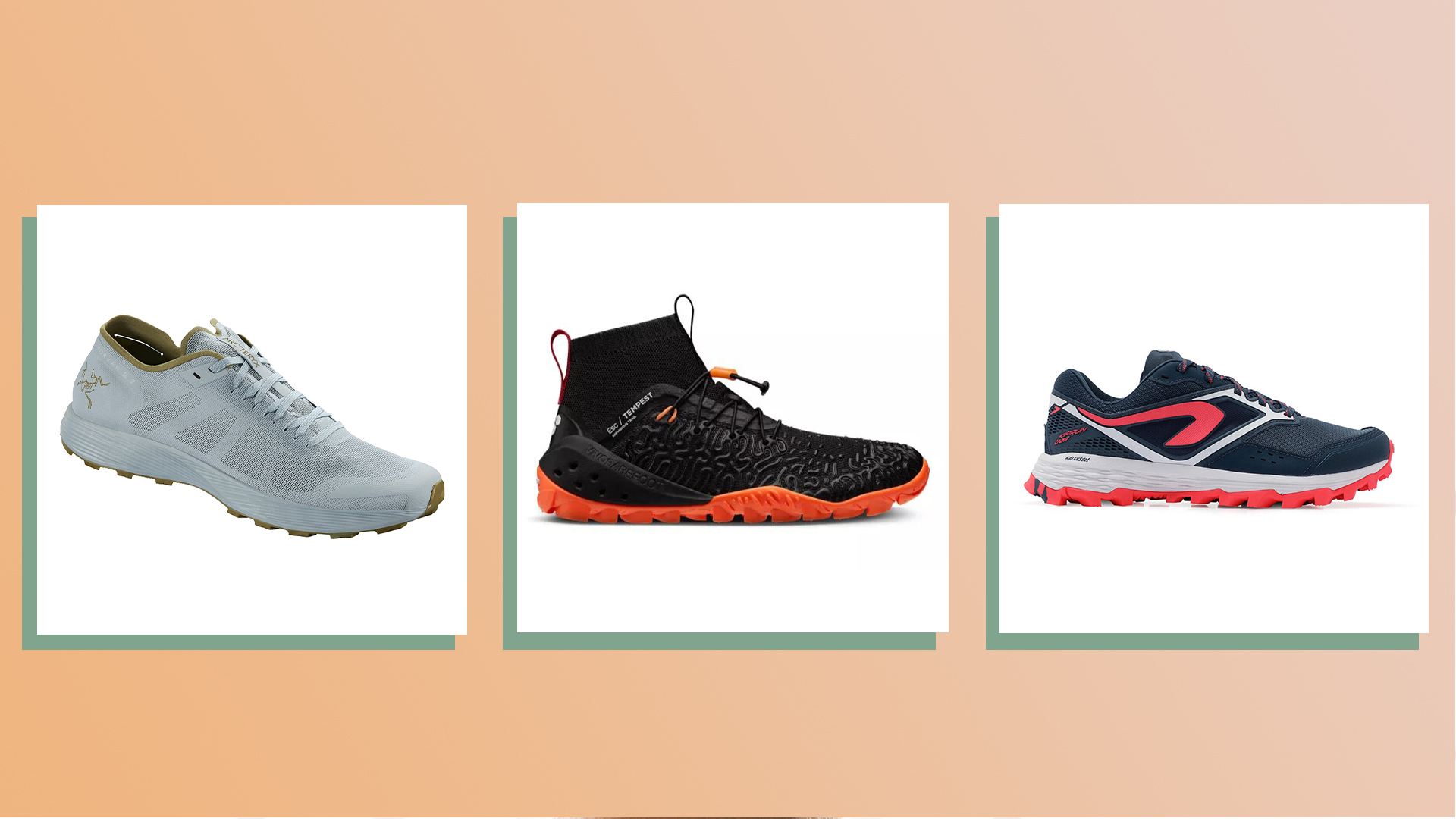
Having the best trail running shoes is imperative for the runners among us who prefer the path less traveled. They help you navigate unstable ground, rugged terrain and wet weather conditions.
If you're a seasoned runner it's likely you'll already have a pair of the best running shoes for women, but if you're planning on trying out unstable terrain, it's a good idea to invest in trail running shoes suitable for going off-road.
Designed specifically for hills, mountains, grassy areas, rocky areas and the woods, most trail running shoes have thicker soles underfoot, with more pronounced tread patterns to help you tackle rocks, branches or wet ground with ease. Running coach Hannah Walsh explains, “They are also generally stiffer and more durable than road running shoes, which allows for additional layers of protection when tackling rugged terrain".
To help you find the best pair of trail running shoes for you, whether you're a novice or experienced trail runner, we've put popular brands like The North Face, Salomon and Vivobarefoot to the test.
What is considered trail running?
"Trail running is defined as running on any sort of trails instead of asphalt," says Merrell Europe Trail Running lead, Franziska Freer. "It's not just about chasing the highest peaks or hitting new records, but the experience in nature. Trail running can offer a variety of locations and scenic routes, depending on where you run, the weather, the elevation, and the type of terrain."
The toll that trail running takes on your body is also different to road running, as author and trail runner Elsie Downing explains, "Every footstep that you take is different on the trails. You often end up hopping over obstacles and landing on uneven ground, which really challenges your legs and your feet. Trail running also provides a full-body workout, as you're pulling yourself up and down hills, scrambling, often while carrying a pack or some sort of weight. It's a workout where you have to learn to embrace the challenge."
What kind of shoes are best for trail running?
"The best shoes for trail running are specific to what you will be doing," says Freer. "While a road running shoe is perfect for the track or paved roads, you'll need more protection, stability, and grip on the different terrains that you can encounter on the trail. To find out which trail running shoe you need, you have to consider the distance and type of terrain you want to run in. For example, if you're planning on running through wet, muddy areas, then a waterproof shoe might work better for you. If you're a fairweather runner, then look for something light and breathable."
"Another aspect to consider is the amount of protection the shoe gives you," says running coach Andy Stopher. "When choosing a shoe consider one which has good protection around the toe box, you’ll understand how useful this is if you have ever stubbed your toe on a rock or tree root! It should also have a level of good underfoot protection such as a rock plate or a good depth of midsole cushioning to limit the protrusion of trail debris up into the sole of your foot."
Opting for trail running shoes that have been designed for women can also help prevent injury and aid performance. "A women’s hip and knee will move more as the foot lands on a run," says PT and Dean Zweck. "Essentially, this means the hip moves out and rotates in, and the knee moves in. This greater mobility means women are more susceptible to injury unless their footwear is correct, meaning choosing the right shoes is even more important."
How we tested the best trail running shoes for women
When testing trail running shoes, we assessed them on style, comfort, functionality and stability. In each pair, we tackled a range of terrain, from grassy trails and muddy hills to rough and rocky terrain. We weighed up the pros and cons of each shoe and took the following into consideration:
- Material—if you're working up a sweat and tackling dry terrain, you'll want a pair of running shoes made from a breathable mesh material. For soft and muddy trails you'll want waterproof shoes with GORE-TEX uppers.
- Support—you'll need plenty of support off-road, look for shoes with deep and well-space lugs for better traction in muddy conditions to avoid nasty slips.
- Comfort—how much cushioning you go for is very much a personal choice. Some people like to feel the ground beneath them, while others opt for extra cushioning to keep a spring in their step and protect joints by reducing impact.
- Suitable terrain—consider what terrain you'll be running on and choose the pair of trainers most suitable. For example, short lugs work best when running stable trails with rock or soil, while tall lugs help you dig deep into the mud and multi-directional lugs cover all directions.
The best trail running shoes as chosen by our experts
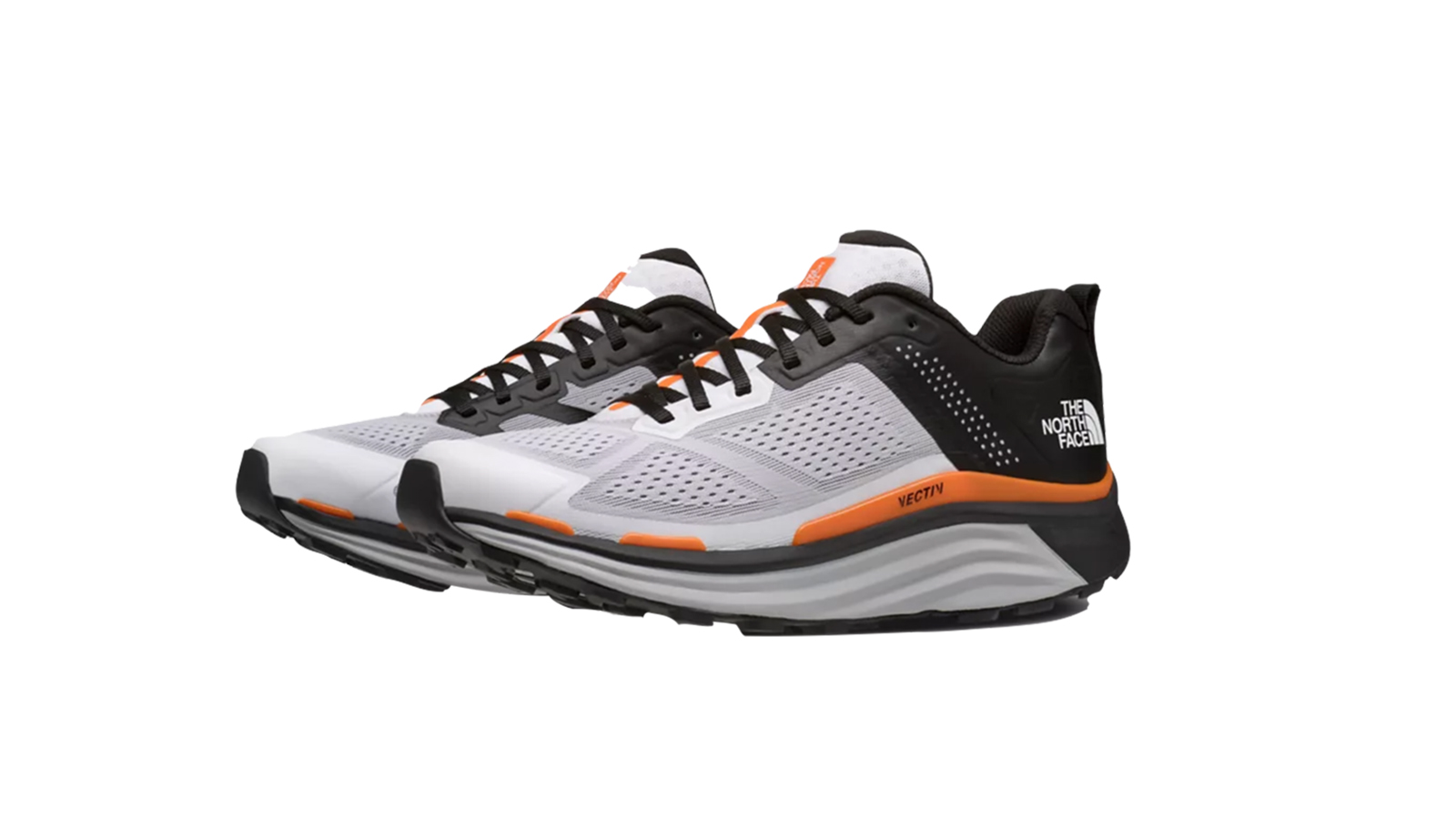
1. The North Face Women's Vectiv Enduris
Our expert review:
Specifications
Reasons to buy
Reasons to avoid
The North Face Women’s Vectiv Enduris trail running shoes are by far the most comfortable and lightweight pair we’ve tested yet. Thanks to a padded heel cup, collar and tongue, and OrthoLite foam footbeds, the cushioning and fit of these shoes are unmatched. You can run freely without worrying any part of the shoe will rub uncomfortably as you move.
At just 556g per pair with breathable air-mesh uppers, they’re ideal for long trail runs and will keep you light on your feet. Our tester felt supported to no end as they tackled rough trails in these shoes. With a rubber sole and 3.5mm lugs, they felt confident, supported, and light running in this pick. However, it's worth noting shoes with taller lugs might be more suitable for those who want to hit muddy areas.
"You need deeper lugs for really muddy conditions, but shallower lugs like these can work well if they have really grippy, rubbery soles and if you're going to be running on wet rock or harder terrain," says Downing.
All in all, we think these are a worthy pick for those looking to invest in a comfortable, lightweight, and supportive shoe that will take them on many trails to come.
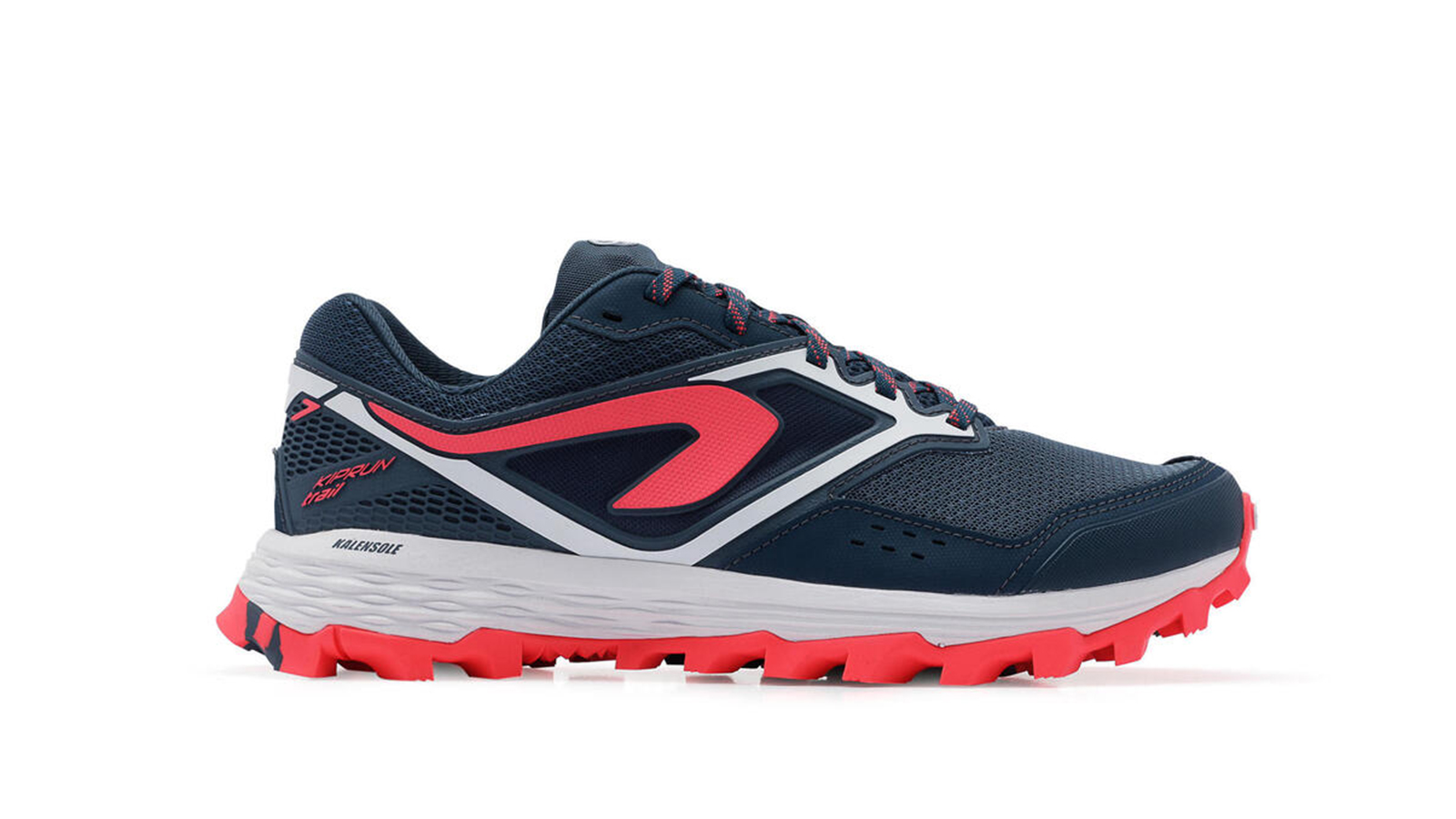
2. Evadict XT7 Trail Running Shoes
Our expert review:
Specifications
Reasons to buy
Reasons to avoid
The Evadict XT7 looks similar to an ordinary running shoe but with all of the features needed for a trail shoe. Our tester found it fit true to size, with no need to size up—in fact, they found it to be a very snug fit.
The shoe features extra-thick foam, so your foot feels cushioned all over. The cushioning also meant that no lateral movement occurred as our tester ran, which is just what you need for uneven surfaces. Similarly, the sole has been created with a new type of rubber, providing 42% more grip, and features widely spaced 5mm lugs.
Our tester felt protected running, even among fallen branches, but felt the grip could have been better compared with other shoes. Having said that, these trainers are fantastic for the price tag. Not many trail shoes are this affordable and our tester found no huge compromise on quality.
"The pros of the Evadict XT7 are its versatility and the protection that it offers your feet with the thick foam cushioning," says trail running coach, Lee Walsh. "However, if you're wanting a shoe that can cope with hard, wet terrain and slippy surfaces, I would opt for a more expensive shoe, as the materials won't be as hardwearing as pricer shoes on the market."
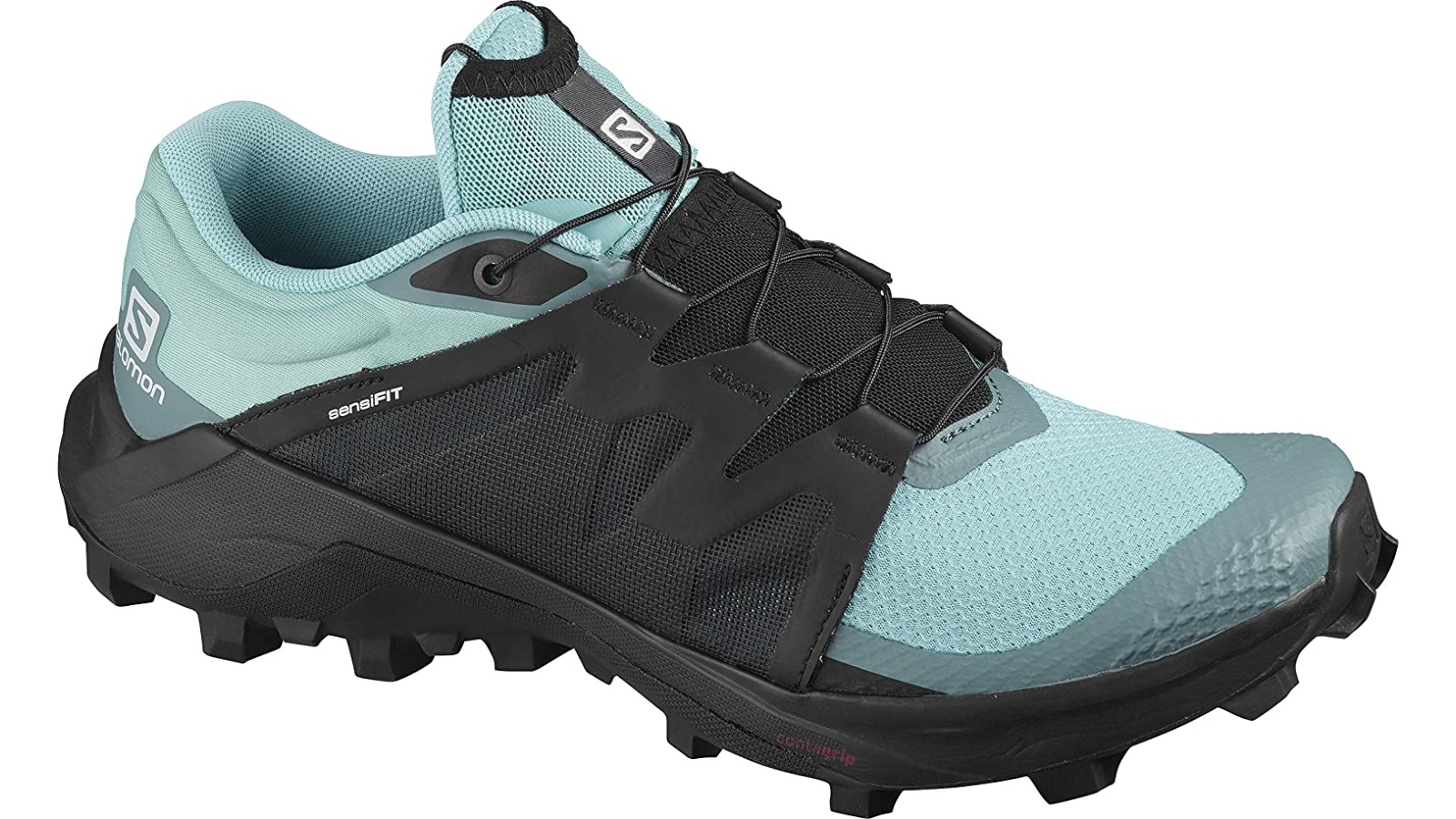
3. Salomon Wildcross W
Our expert review:
Specifications
Reasons to buy
Reasons to avoid
The Salomon Wildcross trainers mean business and are a must-have for running and hiking on muddy trails. Featuring multi-dimensional 6mm lugs for ultimate grip and stability, there's no doubt these trainers are some of the best trail running shoes on the market right now.
The shoes are less cushioned than the other options, but our tester felt incredibly supported running over all sorts of terrain—with no slips as they tackled rocky hills and ran downhill off-road. Despite the feeling of security in the shoe, they found the Wildcross still felt very light, as though the trainers were moving with them rather than weighing them down.
"This is a real multipurpose trail running shoe," says Walsh. "It has a unique lug pattern on the bottom, which keeps your foot secure on unsteady, wet surfaces. I would recommend these shoes to anyone looking for a trail running shoe that is competent in rugged, slippery terrains. However, it does have less cushioning than other shoes on the market, which might mean that you feel some of the surfaces underfoot."
"Ideally for a hard gravel track, you would have something with more cushioning and a little less grip," adds running coach Hannah Rayner.
These would be a great trail running shoe for fitness fans who like a bit more security in their trainer, with more support underfoot and around the foot thanks to the rubber outsole. The Wildcross trainers also come with a handy ‘quick lace’ that you don’t need to tie up, instead simply pull it to tighten. While these shoes are more expensive than the others, we think the trainers are a fantastic option for those who are serious about trail running and hiking on all sorts of terrain.
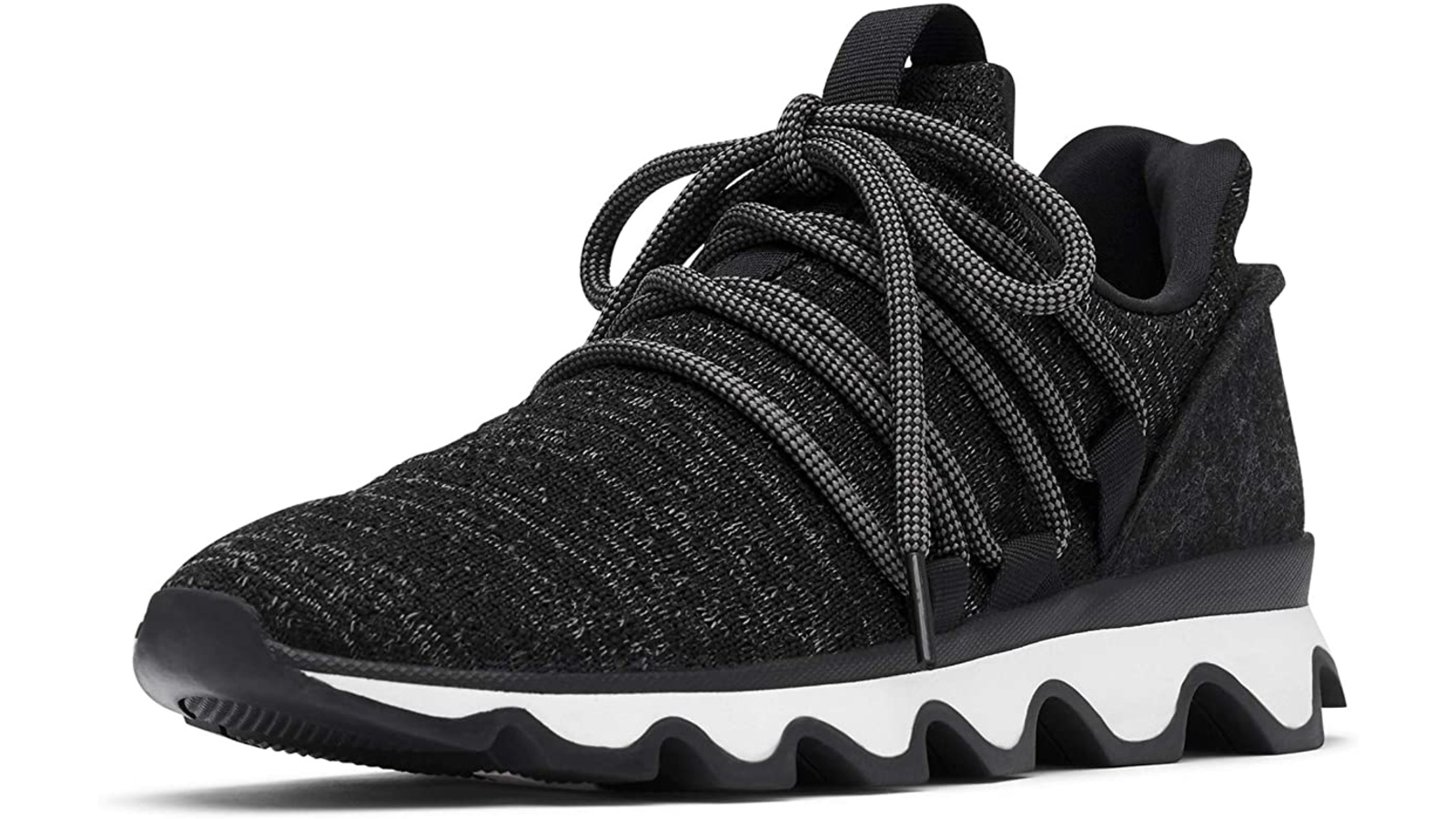
4. Sorel women’s Kinetic lace sneaker
Our expert review:
Specifications
Reasons to buy
Reasons to avoid
The Kinetic Trainer from Sorel isn’t specifically a trail running shoe because the brand doesn't categorize its shoes. Instead, the brand focuses on the versatility of its trainers. The Sorel shoe is the most stylish of the selection we tested, with a slick, minimalist design and neutral color. It's comfortable to wear too, our tester's feet immediately felt soft and cushioned—which is partly down to the molded heel and EVA footbed.
"I would be wary about opting for a shoe that isn't specifically a trail running shoe, but these trainers do have a lot of similar qualities to some of the more well-known brands on the market," says Walsh. "For short, easy runs, this will probably do the job, but if you're serious about running on tricker trails, then I would recommend a shoe with better ankle support and protection against harder surfaces."
The high, rigged sole makes for great grip while running and kept our tester upright. It has a strong immovable heel, so your foot feels tightly gripped to the shoe, while still allowing for wiggle room in the toes. The wide-crossed laces also help secure your foot in the trainer, so there’s no shifting around as you move. However, the soft fabric on top might not be sturdy enough for some trail runners on rough terrain. Our tester tried the Kinetic Trainer in their regular size and felt it was a little too cozy with a sock on, so it might be worth sizing up when trying these running shoes.
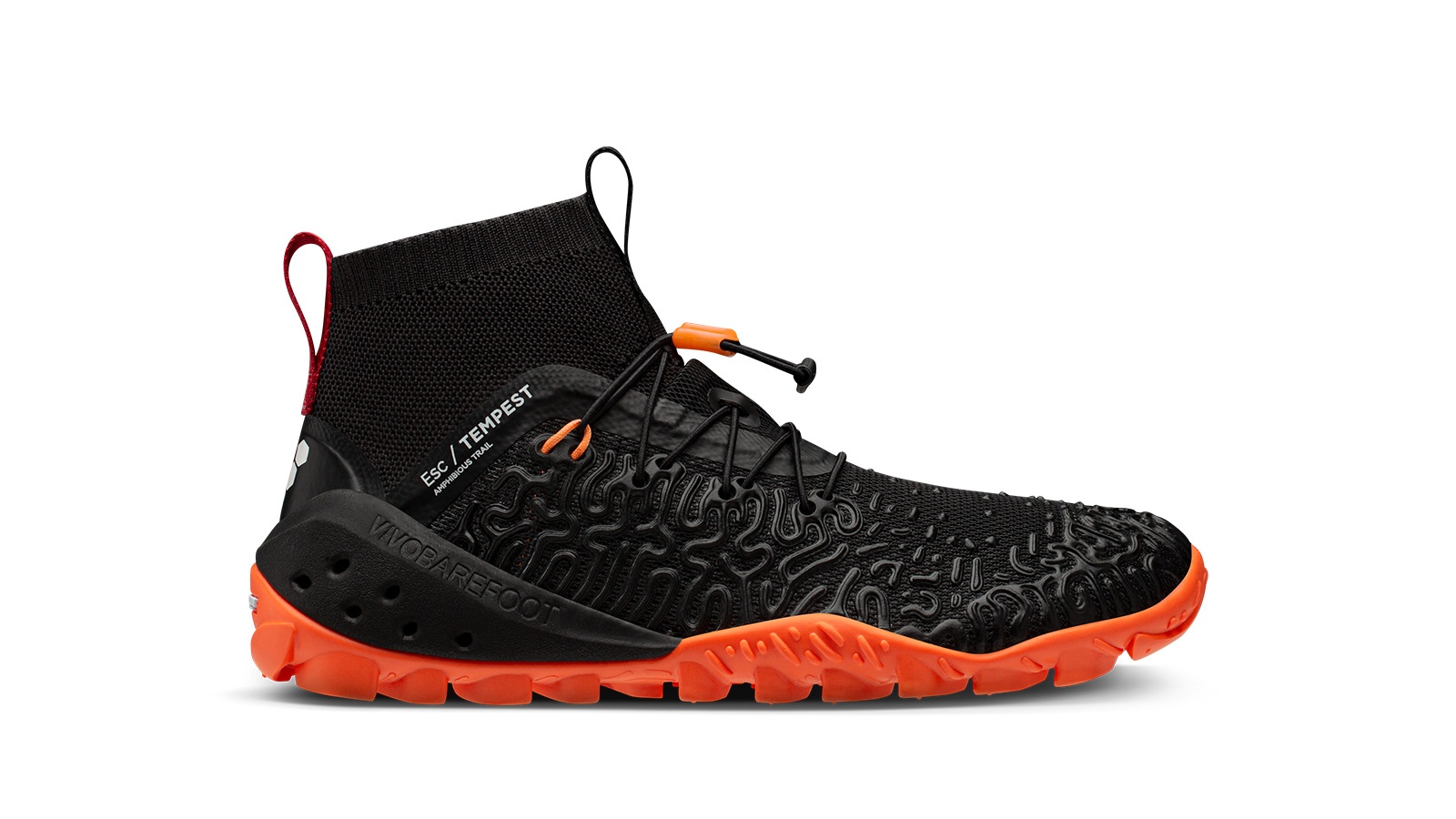
5. Vivobarefoot ESC Tempest Shoes
Our expert review:
Specifications
Reasons to buy
Reasons to avoid
The Vivobarefoot ESC Tempest are a brilliant choice for those who enjoy a dip in the water while on a trail run. Not only does the shoe feel like a second skin, but as the brand states, it's been "inspired by aquatic organisms". The shoe features a very thin sole, but with a solid tread pattern underfoot for stability. In fact, the sole has been developed in collaboration with Michelin, so it’s no surprise that it keeps you firmly anchored to the ground. It’s a tight fit and our tester struggled to get the shoe on in their regular size, so it’s a good idea to size up. Once on, the flexibility as you run is fantastic and the supportive sock against the ankle makes for a comfortable fit.
"Vivobarefoot has a very minimal design," says PT and member of The Trail Running Association, Jessica Redmen. "Consequently, you must break them in slowly, and don’t just go barefoot overnight. These shoes allow you to feel the ground, land softly which will reduce the impact on your joints, and they shorten the length of your stride automatically which naturally reduces strain on your knees."
The brand says the material will stay comfortable in the water, while the midsole will provide additional floatation, so you won’t feel like the shoe is dragging you down in the open water. Of course, if you're exploring wet and uneven terrain on a long walk you might be better served with a pair of the best waterproof hiking boots, but if you're looking to stay dry on a run then these clever running shoes are a must-have. A trainer for the adventurous!
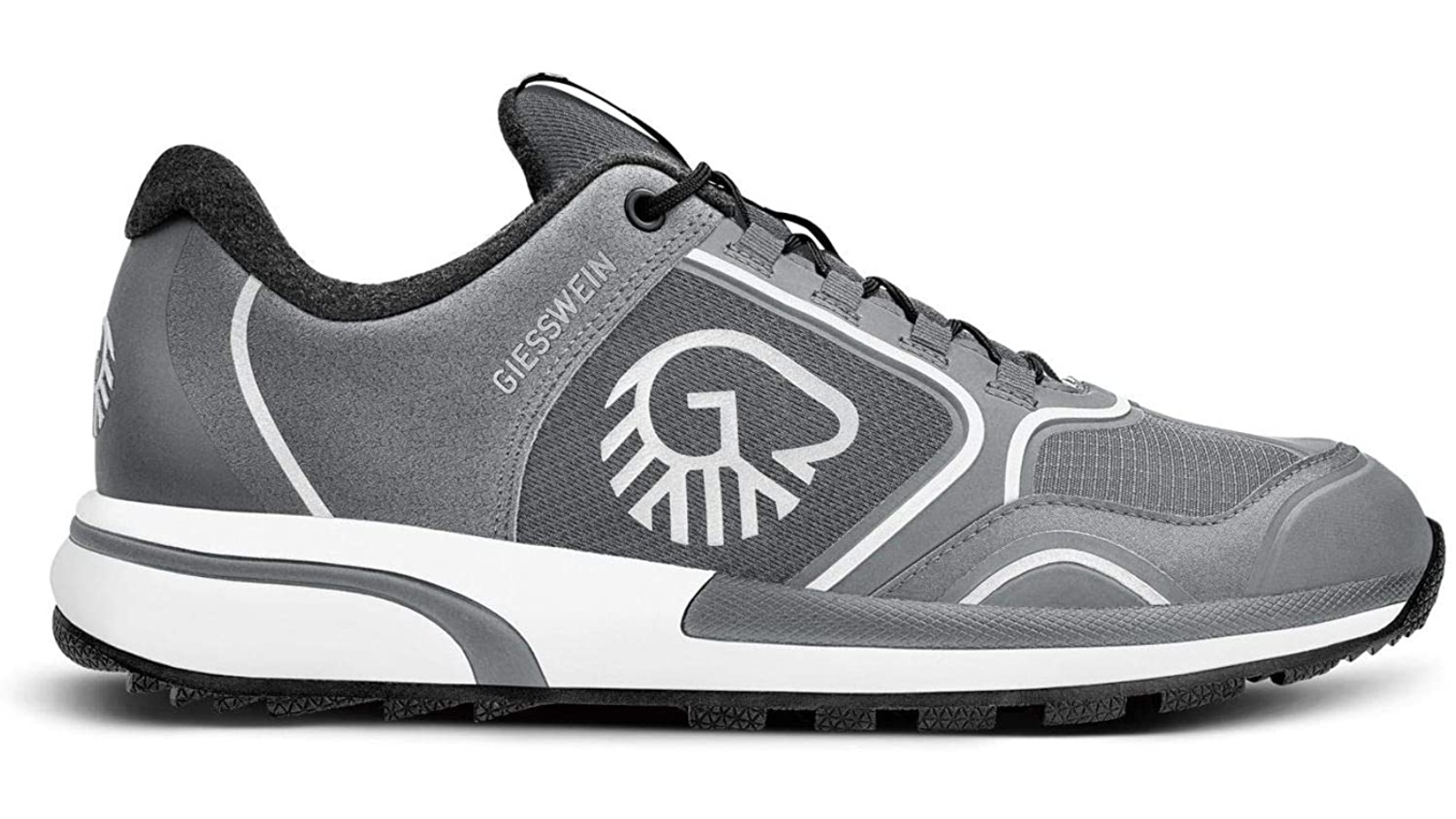
6. Giesswein Wool Cross X
Our expert review:
Specifications
Reasons to buy
Reasons to avoid
The Giesswein Wool Cross X shoes are great for beginners and those combining running with hiking. Intended to be worn without socks, the Wool Cross X has a 100% merino wool lining that extends around the ankle, making it easy to slip on the shoe. While initially comfortable, our tester did find the material rubbed around their ankle—but, they put this down to the shoe being too big. For that reason, they suggest trying a range of sizes to find your perfect fit.
The wool has been incorporated into the trainer for a variety of reasons. First, it’s purported that merino wool neutralizes odors, so no smelly shoes after a sweaty run in the mud—and we can confirm that, so far, it appears to be true. The wool also works to wick moisture away from the foot, so running through your local green space in the rain should be no problem. Before trying, our tester worried the wool might lead to overheating, but apparently, it works to regulate temperature, keeping your feet warm in winter and cooling them down in summer. The micro-grip sole also kept our tester stable and secure on a mix of terrain.
"While the wool in these Giesswein shoes has been designed to help keep your feet cool, which means you can wash them if they get dirty and you can go without socks during the summer, these shoes wouldn't be my first point of call for wet, muddy trails, as they offer very minimal protection against wet and damp," says Walsh. "However, they could definitely serve you well in the summer."
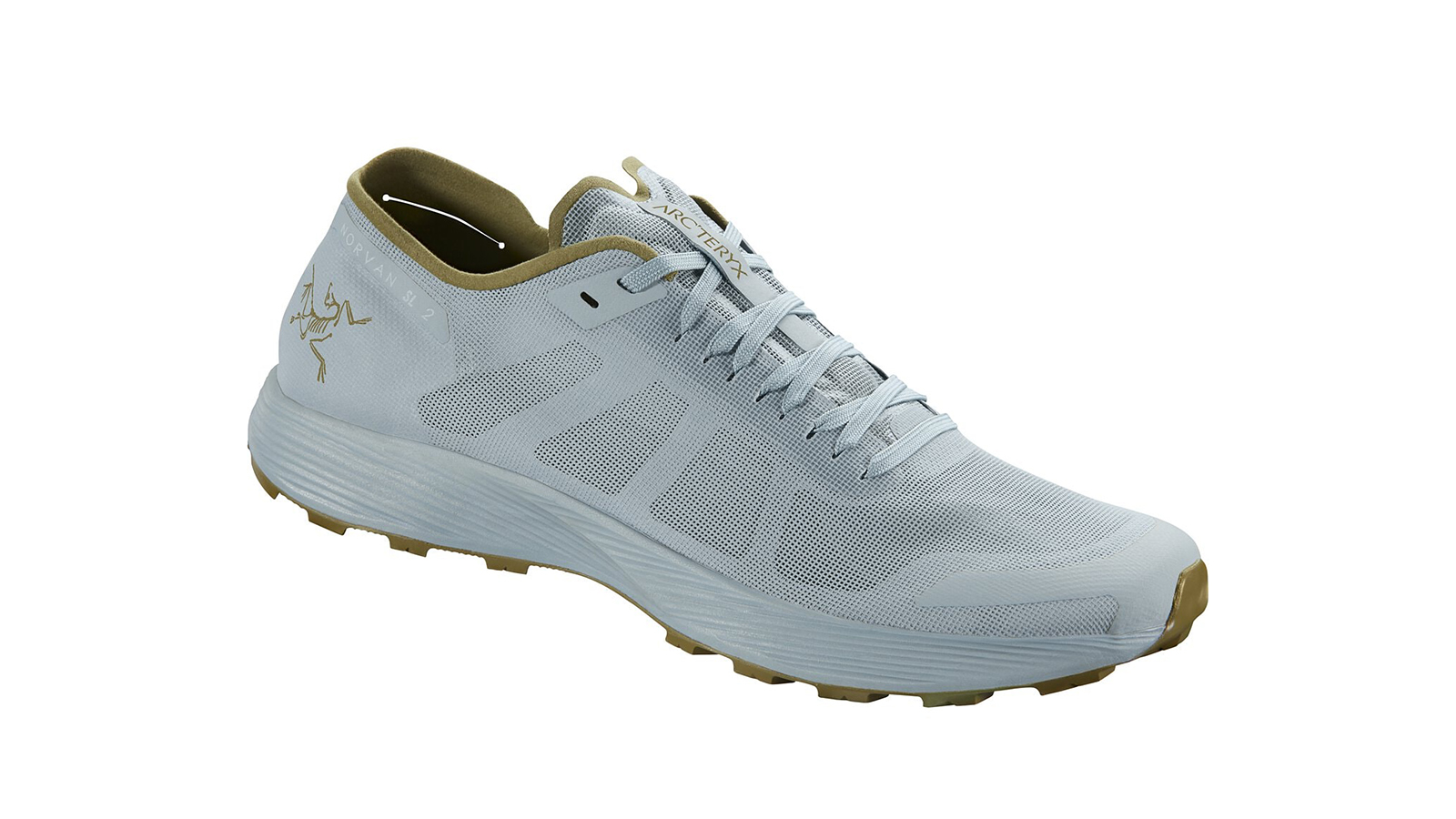
8. Arc'teryx Norvan SL 2
Our expert review:
Specifications
Reasons to buy
Reasons to avoid
In need of a lightweight pair of trail shoes? Look no further than the Arc'teryx Norvan SL 2 trainers. At less than 300g for the pair, our tester found them super light to wear and easy to pack for walking holidays. But it's not just about convenience with this pair. Our tester rated the sturdiness and stability of the Norvan SL 2—thanks to the Vibram LiteBase Megagrip sole (which is 30% lighter and 50$ thinner than previous versions), and the 3.5mm lugs. They also loved the breathable mesh upper and enjoyed the combo of a 2mm thick EVA footbed and shock-absorbing compressed EVA midsole, as it allowed them to feel the ground beneath them while still protecting joints.
"They might not be the cheapest option, but Arc’teryx shoes tend to offer higher quality materials than other trail running shoes," says Walsh. "The SL 2 trainers are bendier than other competitors, making them ideal for tricker trails with rockier terrains. It also features Megagrip Vibram, which is a rubber that is well-known for being grippy on wet and dry surfaces. As a lightweight shoe, they're ideal for shorter, faster runs and versatile enough to use for hiking as well."
They found the shoes quite a tight fit and recommend sizing up with this pair. They are also quite a narrow fit, but the pliable mesh upper does mean even those with wider feet can wear them without being plagued with the dreaded arch cramps. However, if you do have particularly wide feet you may find yourself with slightly less support from the base as it's quite narrow. And while the mesh is very flexible, we wouldn't say that it's soft or particularly blister-proof. While our tester didn't experience any blistering during testing, the shoe was prone to rubbing especially on the outer toes and ankle areas. That said, this could be resolved by opting for a bigger size. All in all, we love the support and grip offered by this shoe as well as the convenience it offers for traveling and the issues our tester experienced with it were minor—so size up and you'll be good to go.
How to choose the best trail running shoes for you
The best way to assess which trail running shoes are right for you is to try on as many as possible from the best running shoes brands. Like lots of things, personal preference is a key factor when picking the right trail running shoes, but some features to pay particular attention to are:
- Sole thickness: Some might prefer a really thick sole for comfort, while other runners might want a thinner sole, connecting them more to the ground.
- Support: It’s vital that trail running shoes protect you from potentially difficult terrain, so they should offer stability on unstable surfaces.
- Grip: Running expert Hannah Walsh also says you may want to choose your shoe depending on the type of terrain you are planning to run on. She explains, “This will usually determine how aggressive the grip needs to be on the outsole and how much additional protection you need.”
- Cushioning: “You should also consider what sort of distance you are planning to run," advises Hannah. "Generally, the longer you're out on the trails, the more comfortable you will want the shoe to be. If you're running longer distances or are a heavier runner, you might want comfort over speed and opt for shoes with more cushioning.”
- Sizing: It's helpful to opt for a shoe that offers half sizes, as it's always helpful to size up when buying any running shoe. This is because your feet tend to swell a little when you exercise, due to increased blood flow, so it's normally a good idea to go up a size or a size and a half in trail running shoes.
It's also worth thinking about whether you would benefit from a waterproof feature or not.
“For some trail running, you don’t want a waterproof shoe," reveals Hannah. "Waterproof membranes do a great job of preventing your feet from getting wet while allowing them to breathe, keeping you dry and comfortable for longer.
“However, if you do happen to encounter water that goes above the ankle line, a waterproof membrane will only end up collecting water inside of the shoe and weighing you down.” If you’re planning to run through water, a waterproof shoe may not be the best idea. However, if you only plan to run on dry land, such as through the woods or on hills, waterproof could be very helpful in allowing your feet to breathe and keeping them dry should you encounter any puddles!
Are trail running shoes good for hiking?
As trail running shoes often offer a good grip for tricker, wetter surfaces, it makes sense that many people would opt for trail running shoes over heavier, hotter hiking boots. But as Freer points out, there are a few things to take into consideration before you pack them on your next trip away.
"Trail running shoes work for different terrains, so could be an option for hikes – especially in the summer, as they offer a lighter, more breathable, and flexible alternative to a hiking shoe," says Freer. "People who are more used to running in technical terrain are fine using their shoes for hikes and the benefits of wearing a trail shoe is that they are often more flexible, which gives you a great feeling as you're trying to find your footing on different surfaces. But it depends a bit on the person's experience, fitness, and the terrain. If you are planning a more technical, alpine-type of hike, then a more stable, stiffer hiking shoe is recommended and if your ankles don’t feel stable, then a hiking shoe is the better option."
Are trail running shoes good for road running?
Making sure your shoe is fitted correctly and is right for you, is more important than the type of shoe you wear. However, while trail running shoes are safe for road running, your performance might take a hit, as road running shoes tend to be lighter and more breathable. On the other hand, trail shoes can be heavier and less airy to protect the shoe (and your foot) from water and dirt.
"One of the main ways trail running differs from road running is how much less predictable it is," says Downing. "You never quite know what the underfoot conditions will be like, how many puddles you'll be running through or tree roots you'll be leaping over. Trail-specific trainers will help you stay upright and have more fun off-road."
Can you wear trail running shoes casually?
"Trail shoes travel well and are versatile shoes," says Freer. "They're comfortable and light for everyday use and offer great foot support for casual strolls or dog walks. Many shoes have fashionable designs and colorways, so they are a great multi-wear option for people with an active lifestyle, who want a shoe that can multi-task."
How do I clean trail running shoes?
Start by opening the shoes up fully, removing the insoles and laces. Let these dry at room temperature rather than on the radiator, as this can compromise any adhesives or materials used in the footwear. "Use a brush and water to clean the shoes of dirt, mud, and stones to ensure the shoe grip is maintained and damage caused by rough surfaces doesn't wear away at the sole," adds Freer.
w&h thanks PT and member of The Trail Running Association, Jessica Redmen, running expert Hannah Walsh, trail running coach Lee Walsh, Merrell Europe Trail Running Lead Franziska Freer, running coach Hannah Rayner, running coach Andy Stopher, Elsie Downing, trail runner and author of Coasting: Running Around the Coast of Britain and PT Dean Zweck, Product Development Manager at Total Fitness, for their time and expertise.
Sign up to our free daily email for the latest royal and entertainment news, interesting opinion, expert advice on styling and beauty trends, and no-nonsense guides to the health and wellness questions you want answered.
Amy Hunt is an experienced digital journalist specialising in homes, interiors and hobbies. She began her career working as the features assistant at woman&home magazine, before moving over to the digital side of the brand where she eventually became the Lifestyle Editor up until January 2022. Amy won the Digital Journalist of the Year award at the AOP Awards in 2019 for her work on womanandhome.com.



